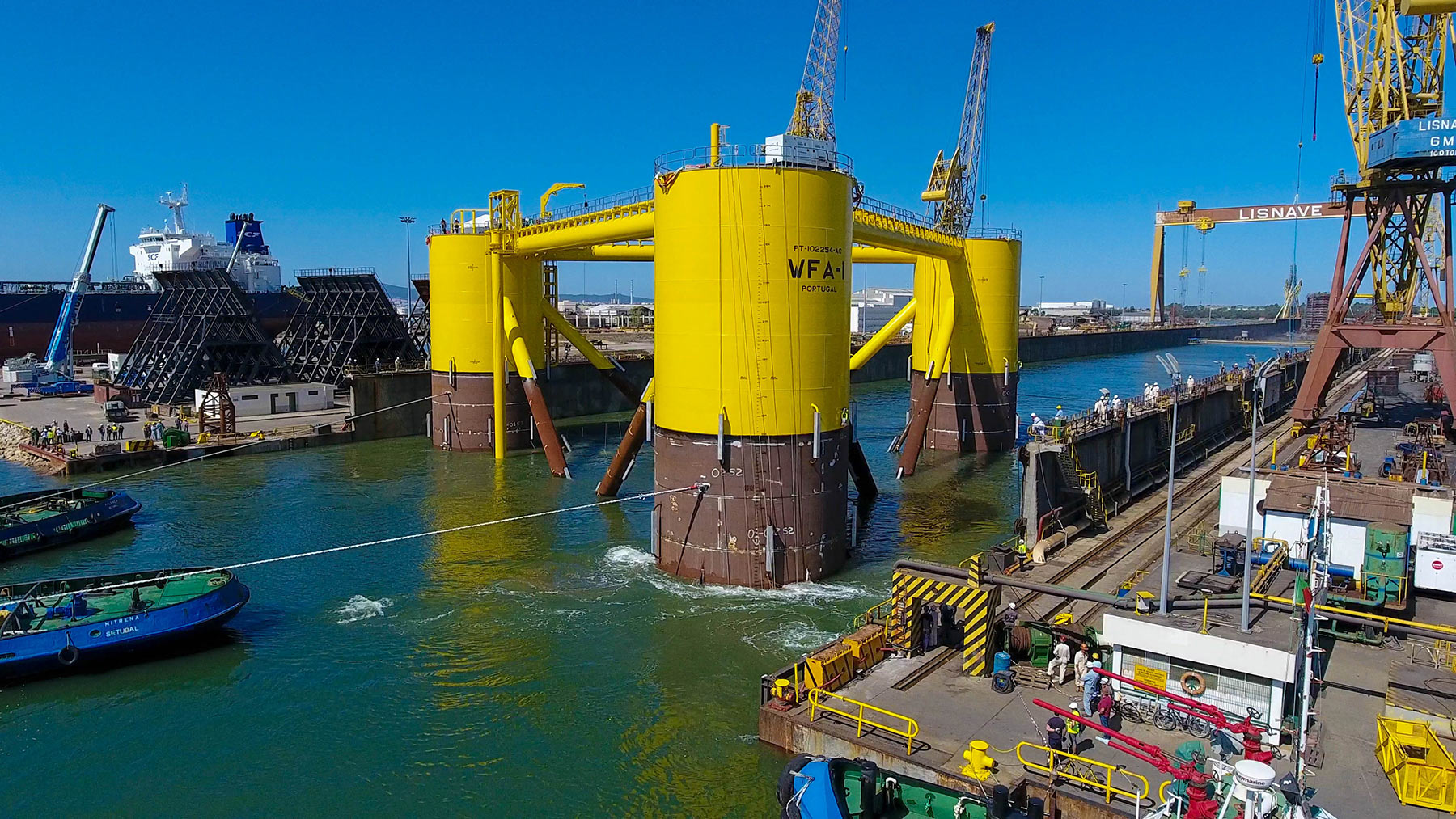Japan: Where High Tech Meets High Value Foreign Direct Investment
Excellence and innovation fuel the Japanese economy. Every day, a diverse range of companies spur growth producing high-quality products that are sought after by consumers around the world. Americans buy Toyota more than any other car brand.[1] Uniqlo has stores in more than 20 countries.[2] And Sony is recognized as a leader in innovation.[3]
While each company followed a unique path, they all had one thing in common: access to Japan’s world-class R&D and advanced manufacturing. These competitive advantages have long fueled Japanese innovation and are only growing stronger. Today, Japan ranks second globally for R&D expenditure,[4] fourth for manufacturing competitiveness,[5] and 13th for innovation, up three spots from a year ago.[6]
The world noticed. Global businesses and investors flocked to Japan over the past several decades seeking to turn those competitive advantages in their favor. Bolstered by the country’s political stability and unparalleled work ethic, they reaped the benefits of Japan’s highly skilled workforce and innovation prowess. Many saw those benefits extend beyond manufacturing to digital technologies, healthcare, sustainability and more.
According to Bloomberg’s latest Foreign Direct Investment (FDI) Survey, Japan’s advantages across business-friendly policies, strong talent and high productivity—especially in technology and advanced manufacturing— will continue to drive inbound FDI flows over the next three years.
Every day, a diverse range of Japanese companies spur growth producing high-quality products that are sought after by consumers around the world.
A Testbed for Innovation
Policy and regulation often stifle innovation. Yet with the right adjustments, they become catalysts. Japan’s future-focused approach to business collaboration fosters an environment where the public and private sectors can champion innovation together.
The Regulatory Sandbox framework provides a perfect example. Introduced by the Government of Japan in June 2018, the sandbox facilitates regulatory reform to accelerate innovation across financial services, healthcare, mobility and transportation.[7] Local and foreign companies can apply to conduct “demonstrations” under framework, testing new technologies including AI, IoT and blockchain. As of March 2021, 140 companies had been certified under the framework.[8]
“Our goal is not only helping entrepreneurs to test their new products in a live market, but also to change the current rules or create new rules,” NAKAHARA Hirohiko, the former Deputy Director-General for Economic and Social Policy, Ministry of Economy, Trade and Industry (METI), said at the 2020 Singapore FinTech Festival.[9]
“The second thing is that the Fourth Industrial Revolution is asking us to review and redefine the current institutions. Every industrial sector can be connected and linked to each other. So, our sandbox is not limited to fintech, but covers other areas such as financial services, healthcare, mobility, recycling, logistics and more.”
“Our goal is not only helping entrepreneurs to test their new products in a live market, but also to change the current rules or create new rules.”
— NAKAHARA Hirohiko, the former Deputy Director-General for Economic and Social Policy, METI
In January 2019, Crypto Garage became the first fintech company to participate.[10] Widely viewed as one of the most innovative and disruptive developments in finance in decades, the cryptocurrency market still faces several challenges. For crypto exchanges, the lack of standardized trading settlements beset growth. Crypto Garage leveraged the Regulatory Sandbox to test solutions to this challenge.
“Starting with the approval of Japan’s first FinTech Sandbox, managed by the Cabinet Office in 2019, we have been preparing for the production service launch by collaborating with market participants, regulators, and other stakeholders,” HAYASHI Kaoru, Representative Director, President Executive Officer and Group CEO, of Digital Garage—parent company of Crypto Garage—said in a press release.[11]
The demonstration paid off. In June 2021, Crypto Exchange completed the crypto asset exchange service provider registration, putting the company on track to launch the settlement solutions it trialed through the Regulatory Sandbox.[12]
“Japan has a wholesome ecosystem for spinning a basic technology into a final solution.”
— Dr. Samuel JK Abraham, founder of GN Corp

A Robust Start-Up Ecosystem
Start-ups are the lifeblood of innovation. Unburdened by legacy products, systems and ways of working, they develop solutions for some of the world’s most pressing challenges. As Japan’s robust start-up ecosystem continues to grow, the government has taken steps to accelerate disruption.
The J-Startup Program created by METI in 2018 plays a big role in that effort. More than 10,000 start-ups currently call Japan home. The program brings together public and private resources to help high-potential start-ups grow on a global scale.[13] Meanwhile, Japan External Trade Organization’s (JETRO) helps both start-ups and more established companies in Japan make the connections that they need to thrive.
“When it comes to searching for international alliances either for research or for a business collaboration, the global network of JETRO has been helping us to connect us with institutes and companies with synergy,” says Dr. Samuel JK Abraham, founder of GN Corp. “Their experts, who are veterans in regional business practices and regulatory compliances, have been very helpful to us.”
GN Corp, which has an office in Yamanashi , a Japanese prefecture to the southwest of Tokyo, focuses on cell therapy solutions and novel bio-inert implants for healthcare applications. With four patents and another seven pending, the company benefits tremendously from its presence in Japan.
“As cell therapy has been one of our major areas of focus, regulatory procedures in regenerative medicine sector in Japan accelerate business development,” Dr. Abraham says. “The ‘Strategy of SAKIGAKE’ (priority examination) designation system that gives preferential treatment to innovative and groundbreaking solutions aiming to apply in Japan ahead of the rest of the world, which covers medical devices, regenerative medicine products, and in-vitro diagnostic medicines is a real boon.”
While forward-looking regulatory policies empower companies to try new things, the broader business ecosystem serves as the bedrock for biotech innovation.
“Japan has a wholesome ecosystem for spinning a basic technology into a final solution,” Dr. Abraham adds. “Starting with analysis of a product which could either be a chemical substance or a biological compound for its safety, then undertaking pre-clinical evaluation in different animal models—Japan has both the infrastructure and technically qualified personnel with necessary expertise. Beyond that, the logistics services, especially for temperature sensitive materials across institutes is incredibly professional and efficient.”

Leading at the Forefront of Change
While digital transformation has long been under way, Covid-19 accelerated the trend by several years.[14] Unprecedented disruption from the pandemic underscored a new reality: Digital is no longer an option, it’s the default. Japan remains ready.
To stay competitive, businesses and governments must embrace new strategies, practices and technologies. To that end, the Japanese government established a new Digital Agency in 2021 to accelerate the ongoing digital transformation in the public and private sectors.[15] In turn, Japan could add up to 78 trillion yen ($735 billion) to its economy by 2030 through its efforts to embrace digital transformation.[16]
Meanwhile, the Vision for a Digital Garden City Nation for Achieving Rural-Urban Digital Integration and Transformation across Japan aims to solve the problem of access. Digital innovation takes root in urban areas long before rural areas. This often results in a gap. The new initiative aims to boost the use of digital technologies and solutions in rural areas to narrow the gap between urban and non-urban areas.[17]
Renewable energy is another area where Japan is making laudable progress. Japan has filed more international renewable energy patent applications under the Patent Cooperation Treaty (PCT) than any other country in the world. Between 2010 and 2019, Japan filed 9,394 patent applications relating to solar, fuel cell, wind and geothermal technologies.[18] Unsurprisingly, Japanese businesses lead the world in participation in Taskforce on Climate-Related Financial Disclosures.
Japan’s embrace of clean power continues to attract renewable energy companies from around the world. In March 2020, U.S.-headquartered Principle Power established Principle Power Japan Godo Kaisha in Tokyo as a sales base for the full-scale launch of offshore wind projects in Japan.[19]
“Japan has always been one of the most attractive markets for our business because there are a lot of the physical fundamentals that make for good floating offshore wind projects.”
— Aaron Smith, Chief Commercial Officer, Principle Power

“Japan has always been one of the most attractive markets for our business because there are a lot of the physical fundamentals that make for good floating offshore wind projects,” says Aaron Smith, Chief Commercial Officer, Principle Power. “The potential for floating off for offshore wind in general is around 700 gigawatts. To put that in perspective, the total generating capacity of Japan is around 300 gigawatts. Around 90% of that capacity is in deep water, and our technology is the answer that can help the government and different suppliers bring that to market.”
Principle Power was able to access support from JETRO to establish a Japanese subsidiary in order to tap into this potential, making the process hassle free.
“It only took around three months to set up after making the decision,” Smith says. “We had great engagement with JETRO. It was really useful to have advice that spans taxes, payroll and regulation. And then also the publicity that came from working with JETRO. The process removed some of the barriers to entry.”
Today, Principle Power collaborates with local governments, utilities and other companies across the country to build an offshore wind value chain.
“Our deepest collaboration right now is with a major Japanese gas company,” Smith says. “They are engaged in the development of floating offshore wind projects. They see it as an attractive way to diversify their portfolio towards a low-carbon future and also to increase their footprint in the electricity generation and supply business. We've had a really good collaboration in trying to originate projects and get projects on the government’s radar.”
A wide range of initiatives and incentives make it easier than ever for foreign companies to make Japan’s advantages their own. In turn, Japan is fast becoming the leading destination for the world’s innovators, entrepreneurs and business leaders to unlock new opportunities for enduring value creation.
“The green growth strategy is an overarching goal that touches a lot of different programs,” Aaron says. “One of the things that we're really excited about is that the government has announced a green investment fund to support the green growth strategy. There's a lot of specific things for offshore wind which are really aimed at adapting the technology to Japan and industrializing it from there.”
